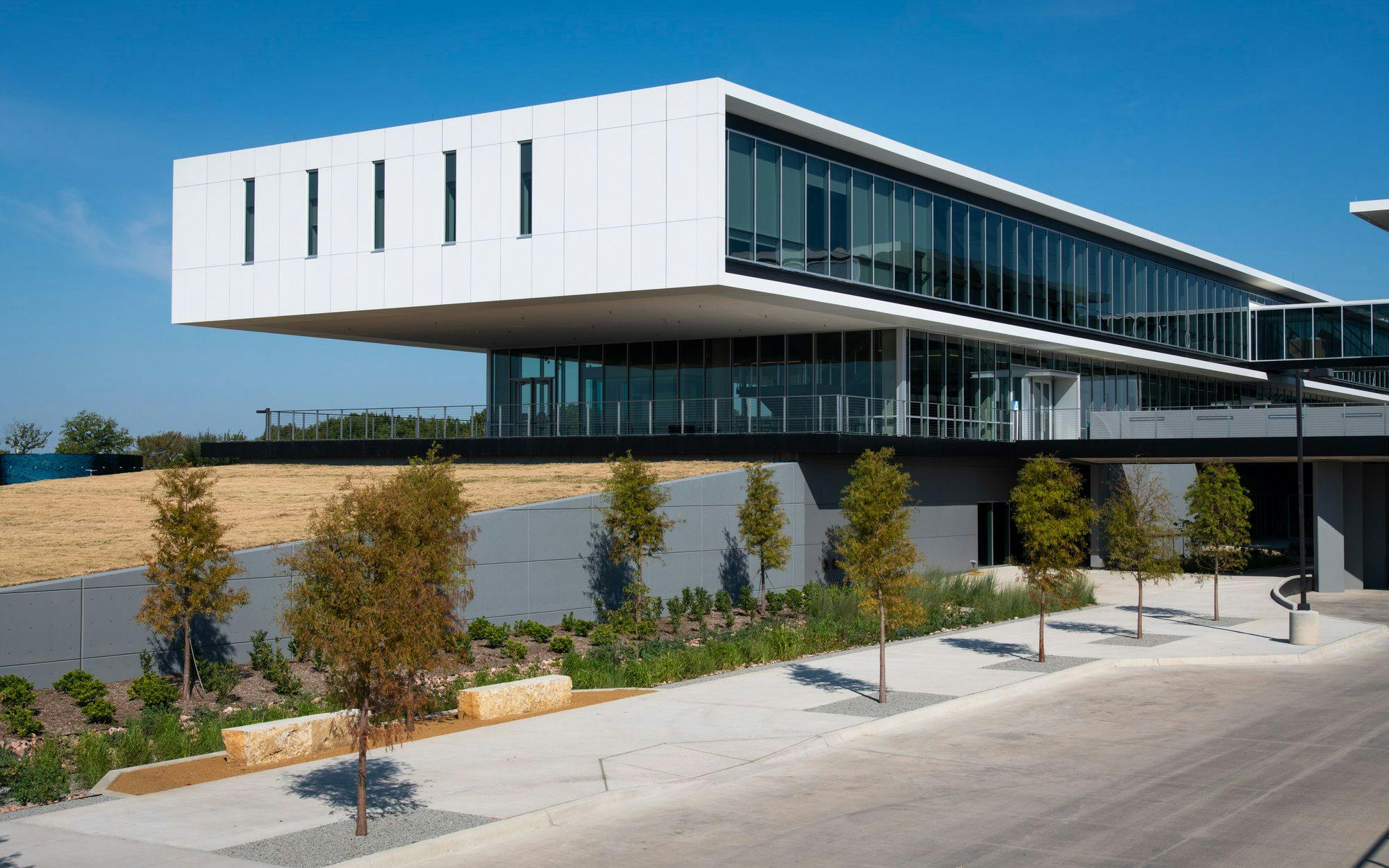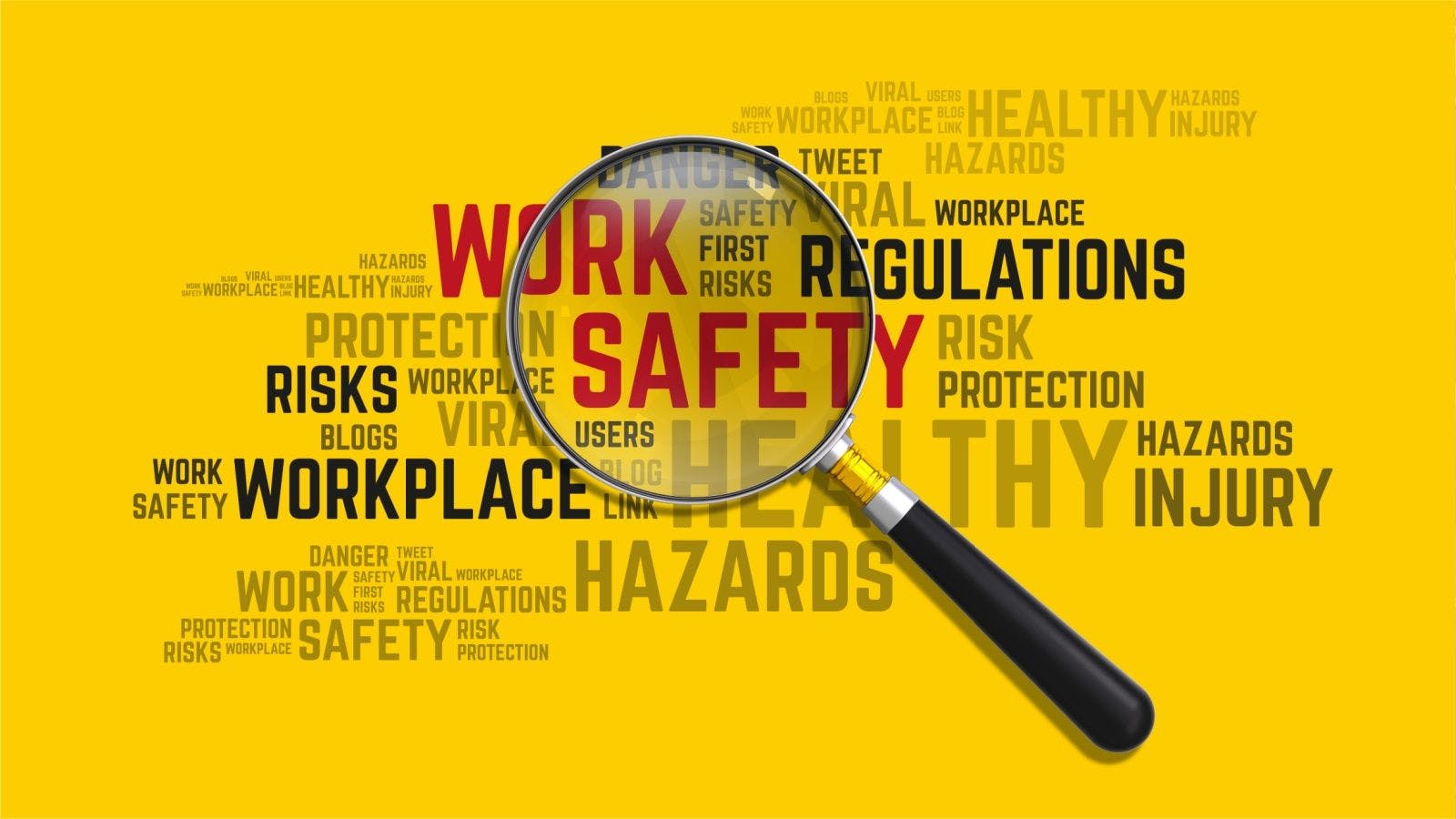
Grown in the Lab
Matt Schrodel has been out of college for more than a decade, but the University of Oklahoma alum has been spending plenty of time back at school. As senior vice president and business unit leader at McCarthy Building Companies, Schrodel served as the lead onsite project manager for construction of the Collin College Technical Campus in Allen, Texas, from 2018 to 2020.
“It was fun to be involved from day one, because the programs aligned so well with our industry and they were new programs to Collin College,” Schrodel says, reflecting on the experience of leading a crew of more than 300 people during the peak of the pandemic. “We really felt like we had an opportunity to understand what they were after and, at times, consult with some of their new professors to provide input into some of the programs and their spaces.”
One of those spaces is the college’s safety lab—which McCarthy is now sponsoring with a five-year, $75,000 commitment. The two-story facility can accommodate around 20 students in Collin’s construction-management program, bringing to life the lessons in courses such as “Physical Hazards Control,” “Material Handling” and “Principles of Safety Engineering.” The space includes a balcony area that was designed to provide fall-protection trainings. “They have a leading edge that lets them do some hands-on types of training,” Schrodel says. “It feels more like a lab than a classroom.”
A FIRST FOR TECHNICAL TRAINING
Other colleges with construction programs offer safety courses, but the lab is part of a first-ever initiative in technical academia: a program developed with the sole purpose of preparing students to enter the industry as construction safety officers. For McCarthy, the sponsorship—which also includes scholarship funds to help students pursue a degree—involves more than handing over a check. The company will provide guest lecturers and play a role in some of those hands-on demonstrations.
While McCarthy’s primary aim is to create a positive impact on the numbers that make headlines in the construction industry—safety-incident rates—some of the company’s lecturers will play a role in reshaping another data point: the number of women who work in construction.
“When we’re going to career fairs or we’re doing guest lectures, we’re very intentional about trying to have some of our female partners participate,” Schrodel says. “If you’re a female student and you see a woman that’s being successful and presenting, you can feel more confident about joining the industry.”
Speaking of joining the industry, McCarthy also sees a chance to snag the best and brightest minds for its own team. In fact, talent recruitment started before the campus was complete. “My superintendent that was leading the project was an adjunct professor doing their capstone class and brought student interns to the site,” Schrodel says. “Now, we’re excited about this program’s ability to help identify some of the craft professionals to join our safety team.”
PROACTIVE AND HOLISTIC
While the lessons in the lab will shape the next generation of the construction safety workforce, McCarthy—which has received Diamond-level certification under ABC’s STEP Safety Management System and been named the safest largest contractor in the country by the Association of General Contractors—has also prioritized the on-the-job welfare of its current workforce. “We’ve been trying to get more proactive with safety,” Schrodel says.
“Back in 2015, we started doing trade-partner safety summits where we try to get subcontractors together once a year to have a discussion about what we can do to better support them.”
In addition to those conversations, McCarthy has been implementing equipment changes, such as only using platform- and podium-type ladders, which led to an immediate drop in safety incidents related to ladders. The company is also in the process of mandating the use of safety helmets as opposed to hard hats.
While the industry’s discussion tends to focus on the physical safety of workers, Schrodel notes that the challenges of the pandemic underscored the importance of caring for their psychological wellbeing, too. (For an in-depth look at mental health and wellness in the construction industry, see “A Culture of Caring.") With that in mind, McCarthy began working with Lyra Health to offer 25 free therapy and coaching sessions per year to individual employees and their family members.
“It’s an immensely powerful thing to make sure we can support not only our employees but their families, as we’re all going through difficult times, and the world is getting more stressful every day,” Schrodel says. “I’ve heard numerous stories from people who have been going through challenges, some of which aren’t even work-related, and being able to have somebody to talk to that offers an outside perspective to provide advice has been powerful.”
The holistic approach to caring for employees all goes back to a simple philosophy. “Our mission statement is to be the best builder in America,” Schrodel says. “To be the best builder, you also have to be the best at safety.”
Related stories








